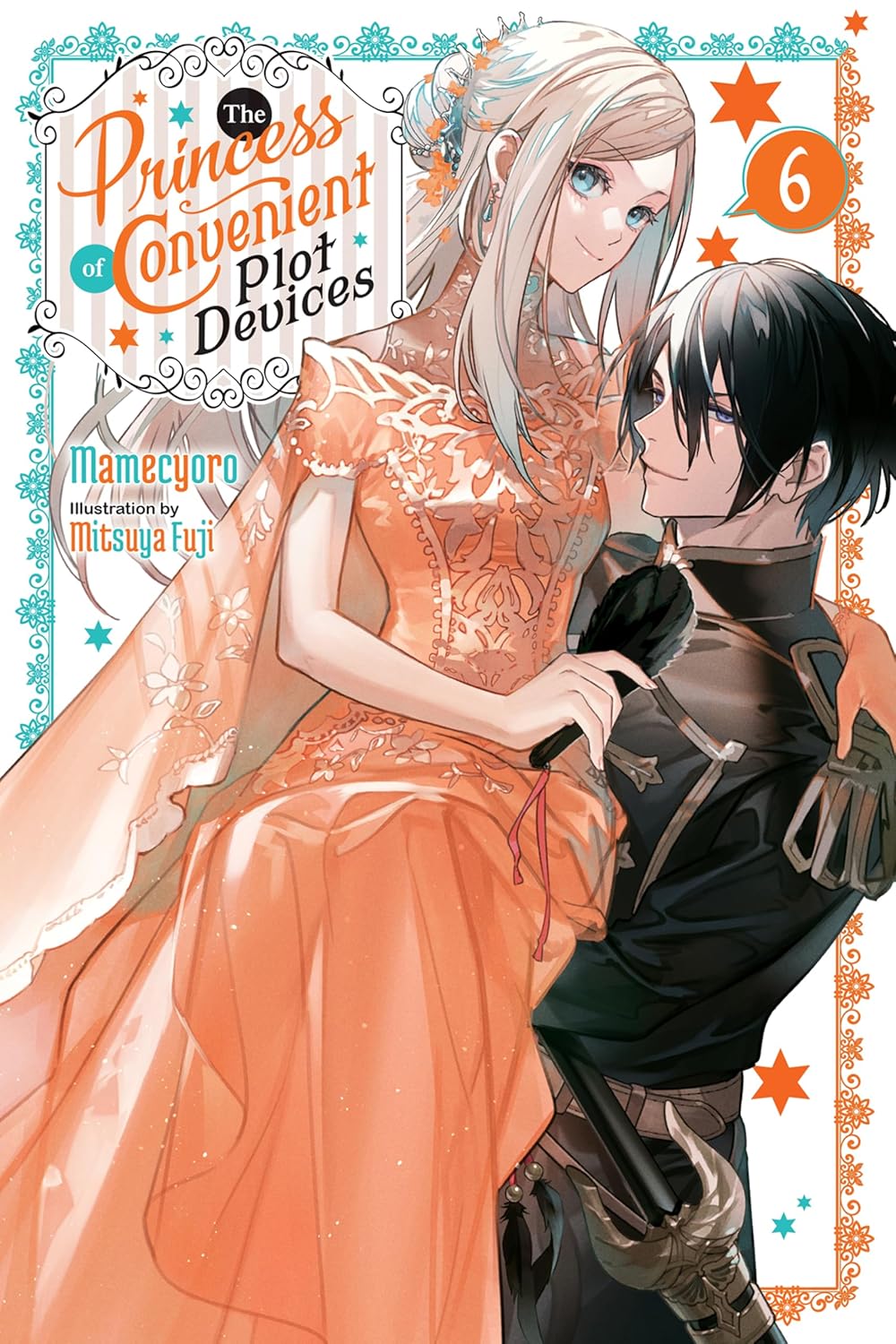By Mamecyoro and Mitsuya Fuji. Released in Japan as “Watashi wa Gotsugou Shugi na Kaiketsu Tantou no Oujo de aru” by B’s-LOG Bunko. Released in North America by Yen On. Translated by Sarah Moon.
I find it amusing how the author goes on in the afterword about the fun romcom parts of the book. Now, to be fair, there is a bit of that, but I… am I reading this book wrong? Are the bulk of the readers less interested in the intrigue than in seeing if Octavia and Klifford will realize they’re in love with each other?” Is this Earl and Fairy? Well, no, probably not, but it has to be said that the far more interesting part of the book is Octavia trying to discover the real past of previous generations while the narrative literally tries to sabotage her. The two plotlines converge when she finally decides on her fake boyfriend, and everything is ready for her to introduce him to her parents and finally get a clue as to how to resolve this and make everyone happy. Boy, sure hope that no one is trying to destroy her schemes! That would suck!
After a brief prologue showing us who our “villain” might be, though like half the cast they’re dealing with past memories and evil manipulation, we see Octavia trying to meet up with Hugh… only to find he’s been moved too a secret location. Unfortunately, Sirius is back to being brainwashed, so he’s no help. Her father the king knows where Hugh is and will tell her, but under one condition: she has to introduce her boyfriend to everyone in a week. You know, the fake boyfriend she still hasn’t nailed down. After briefly doing some boyfriend math, she settles on Derek, and he seems amenable to it. She also discovers a lot more about the relationship between Derek’s father and her own, and finds that her father may not be as happily married as she’d thought. Turns out just because a couple is hot and BL, it doesn’t mean they can’t be torn apart by… well, that’s still a secret.
Let’s get back to that romance. I think by now both Octavia and Klifford are very, very, unconsciously aware that they’re in love with each other. It’s the unconsciously that’s the problem. Octavia is held back by the whole “I will obey every order you give, please give me an order” thing coming from Klifford, and the climax of the book features him dragging her kicking and screaming into finally giving him a real order rather than one of her requests. And Klifford, as is pointed out by the king, is supposed to be unable to feel love like a real human being, though anyone who has read the previous six books might be snorting at that. It helps that immediately after this we get Klifford’s perspective briefly, where he wonders what these strange feelings are? The rest of the book was the usual excellent intrigue, though I am annoyed that the only way to get our leads to step up was the brainwash the opposition. If nothing else, that means one less ally, and Octavia needs allies, as the world is out to get her.
And now the words everyone dreads: we’re caught up with Japan, and Book 7 is not out there yet. So get ready to wait. But till then, yay, they’re fake lovers! Yay? Maybe?



